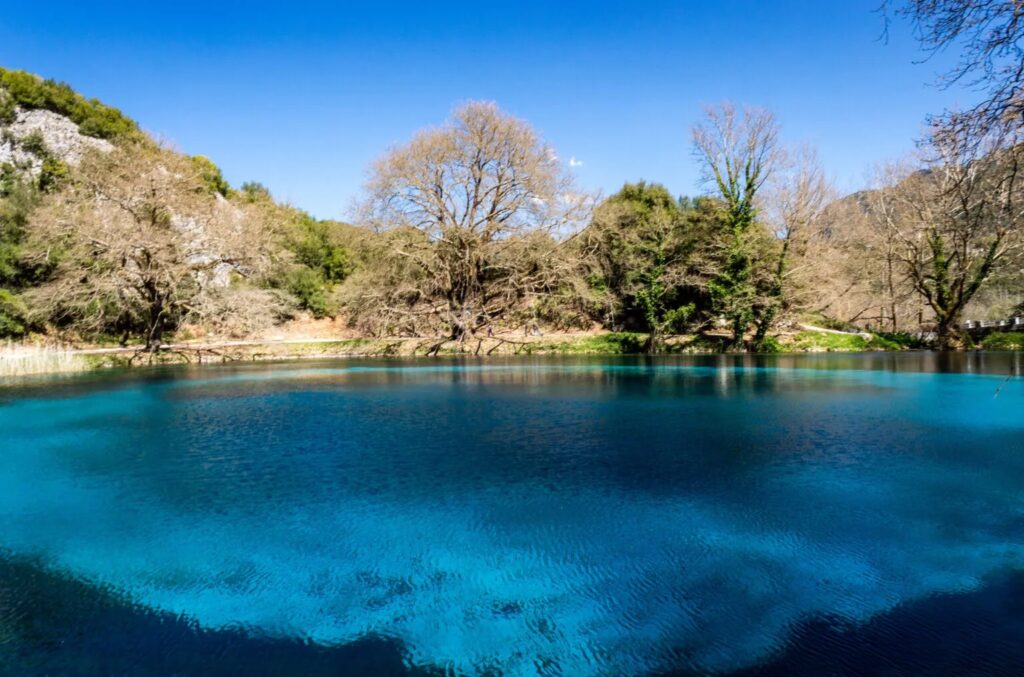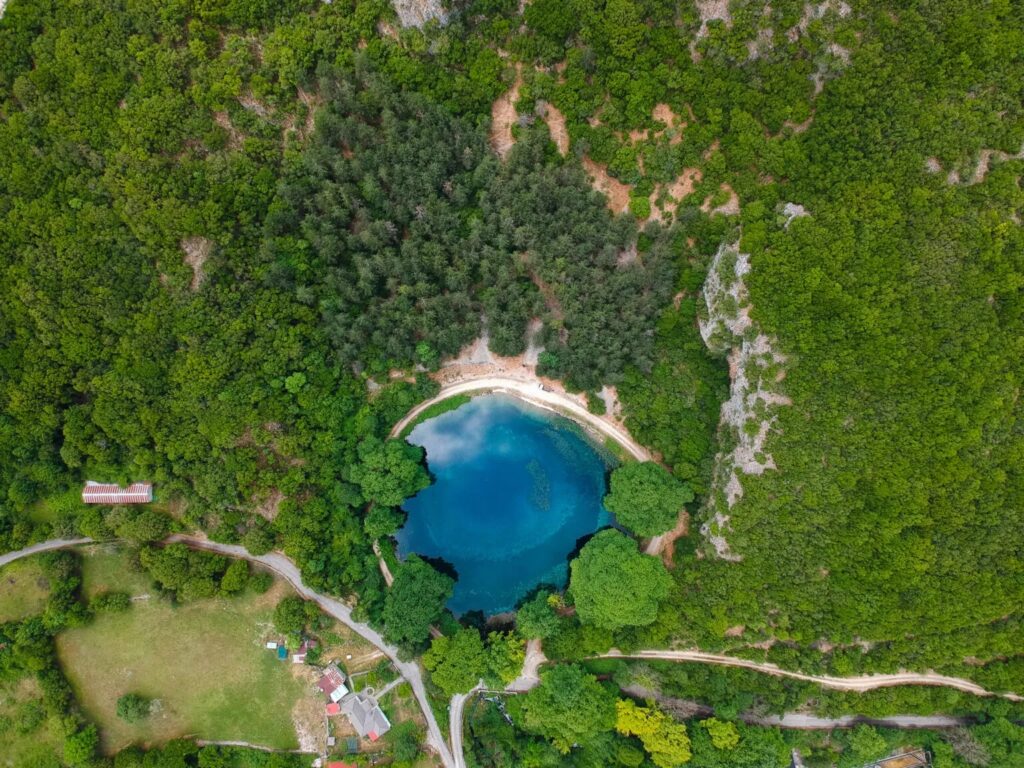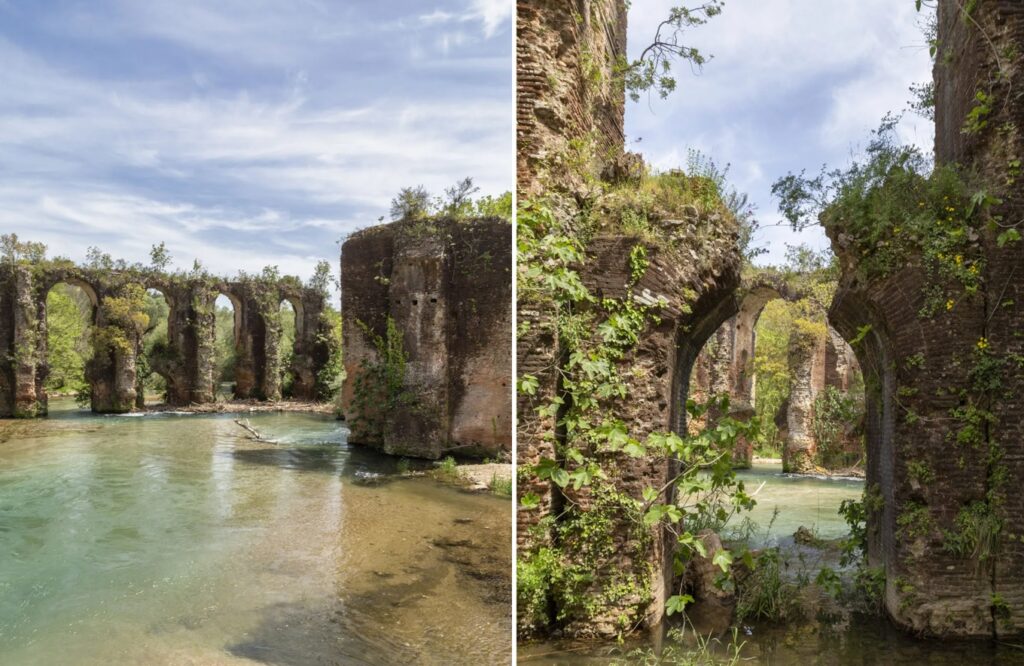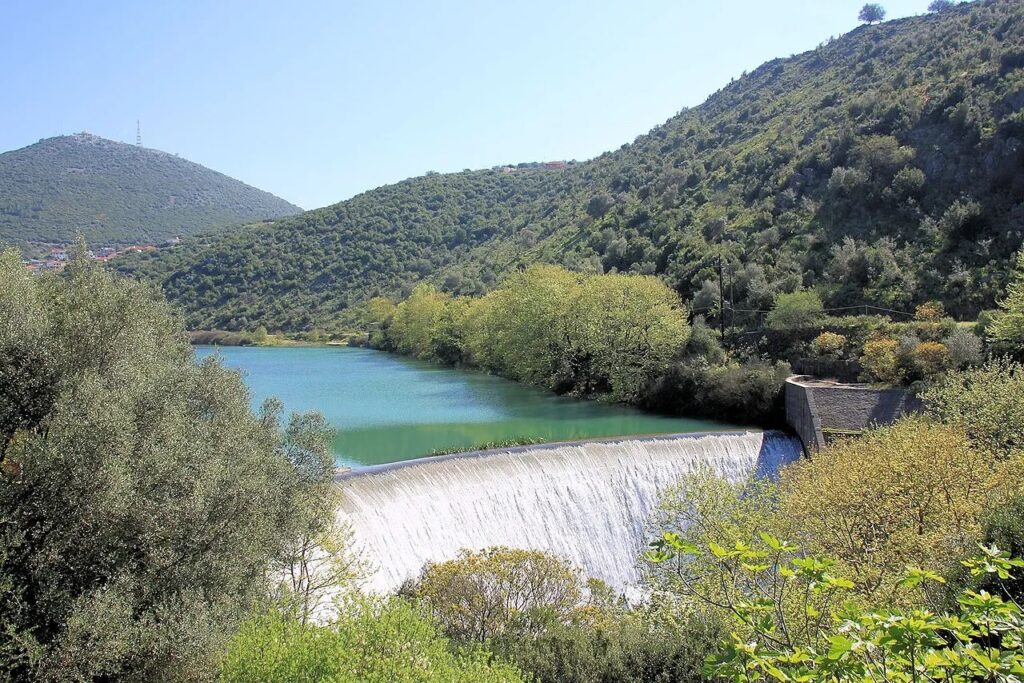Lake Viros is close to Vouliasta, a small village about 30 kilometres away from Ioannina and on the road that connects the largest city of Epirus with Arta. The village is built in a green landscape between the two banks of the Louros river.
But the village there are not many special attractions here, unless a trout hatchery or a small watermill are considered such.
The most special part of the village, however, is certainly the lake, only a few hundred metres away - a lake that locals call "blue" - which is easily explained. While it is not particularly large (it has a diameter of about 100 metres) its water is deep blue and more reminiscent of the sea.
It is almost round, as can be seen from the aerial photographs. According to the local residents of the area, the most likely cause of its formation is underground karst conduits that connect with Louros River.
Something that makes the landscape even more impressive are the dozens of trees that surround it, which are usually reflected in the crystal clear waters of the lake. Although its waters are very clean and clear, the depth of the lake is about 10 metres.


The official name of the Lake is Viros, which means deep waters. If the road brings you to this side of Epirus, it is worth spending some time here, especially in the spring months when the shores of the little unknown lake is an ideal picnic spot.
The added advantage of this point of Greece is that it still remains relatively unknown and - in a good sense - untapped.
Louros: A not very big but important river
The Louros River, which originates from Mount Tomaros and flows into the Ambracian Gulf, is approximately 80 kilometres long. For Greek river data, it is not particularly large, it is not even among the 10 longest rivers in Greece.
But, already from ancient times, the importance of the river for man was pivotal. Cities such as Nikopolis were supplied with water from Louros, in which in 31 BC. by order of the Roman emperor Octavian Augustus, a marvelous achievement of ancient technology was constructed - the aqueduct.
In this way, a city of about 150,000 inhabitants was supplied with water at a distance of 50 kilometres from the sources of the river.

Parts of the aqueduct are still visible in various places in the wider area, thus giving visitors the opportunity to admire with how masterfully the Romans used the altitude difference between the sources of Louros and Nikopolis - which amounts to about 80 metres.
They achieved this by slightly sloping the pipeline as it approached the sea. In fact, they created additional ventilation openings on the slopes.
In the middle of the 4th AD century, the emperor Julian gave an order for extensive maintenance and reconstruction of the project, so the aqueduct definitely worked in the early Byzantine years.
This happened until the middle of the 6th AD. century when the area declined in general and the aqueduct was abandoned after a terrible raid by the Ostrogoths.

Louros, however, has been used in recent years for another reason. At the beginning of the 1960s, one of the first hydroelectric dams of PPC was built there, 25 m high and 70 m wide. The Hydroelectric Station had a small settlement, where PPC employees lived, which today has been abandoned.
READ MORE: MYKONOS: One&Only and Monterock to open a new 5-star hotel worth €81 million.


